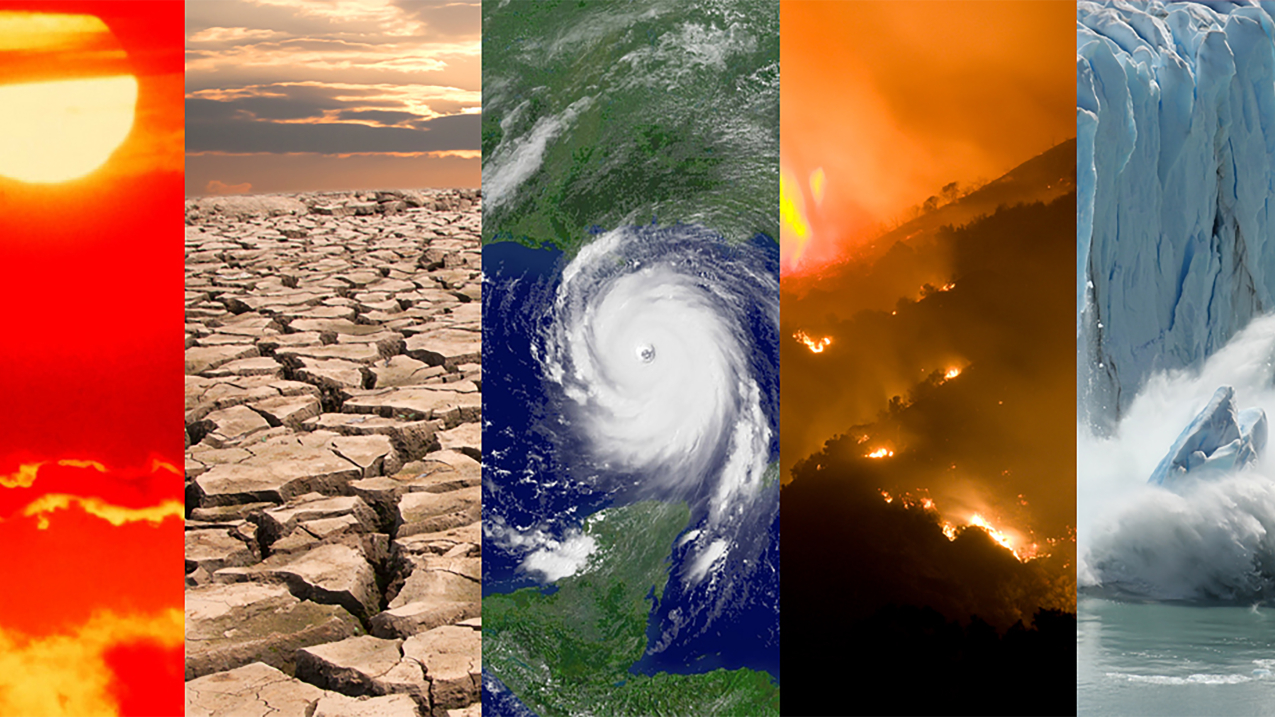
A collage of typical climate and weather-related events: heatwaves, drought, hurricanes, wildfires and changes in sea ice coverage. (Image credit: NOAA)
After registering unusually high temperatures across the globe, May 2020 tied with 2016 as the world’s warmest May on record, according to scientists at NOAA’s National Centers for Environmental Information.
The heat wasn’t just limited to May. The three-month season (March through May) and the year to date (January through May) ranked second-warmest in the 141-year global record.
Here’s a closer look into NOAA’s latest monthly global climate report:
Climate by the numbers
May 2020
The average global temperature in May was 1.71 degrees F (0.95 of a degree C) above the 20th-century average, tying with May 2016 as the hottest May on record. For the Northern Hemisphere, it was the hottest May recorded, with a temperature of 2.14 degrees F (1.19 degrees C) above average.
March through May 2020 | Season
The average global temperature for the season spanning March through May was 1.91 degrees F (1.06 degrees C) above average, making it the 2nd hottest such period on record behind 2016. The Northern Hemisphere had its 2nd-warmest spring, and the Southern Hemisphere had its 3rd-warmest autumn on record.
Year to date | January through May
The period from January through May (YTD) was also the 2nd hottest on record after 2016, with a global temperature of 1.98 degrees F (1.10 degrees C) above the 20th-century average of 55.5 degrees F (13.1 degrees C).
South America, Europe, Asia and the Gulf of Mexico region had their warmest YTD on record.

More notable climate stats and facts
-
Arctic sea ice was low, again: The May average Arctic sea ice coverage was the fourth smallest in the 42-year record, 7.0% below the 1981–2010 average, according to analysis by the National Snow and Ice Data Center offsite link.
-
Some places chilled out a bit: Cooler-than-average temperatures were seen during May across much of Canada, the eastern contiguous United States, eastern Europe and Australia, where temperatures ran at least 1.8 degrees F (1.0 degree C) below average.
More > Access NOAA’s climate report and download images from the NCEI website.
Media contact
John Bateman, (301) 713-9604



